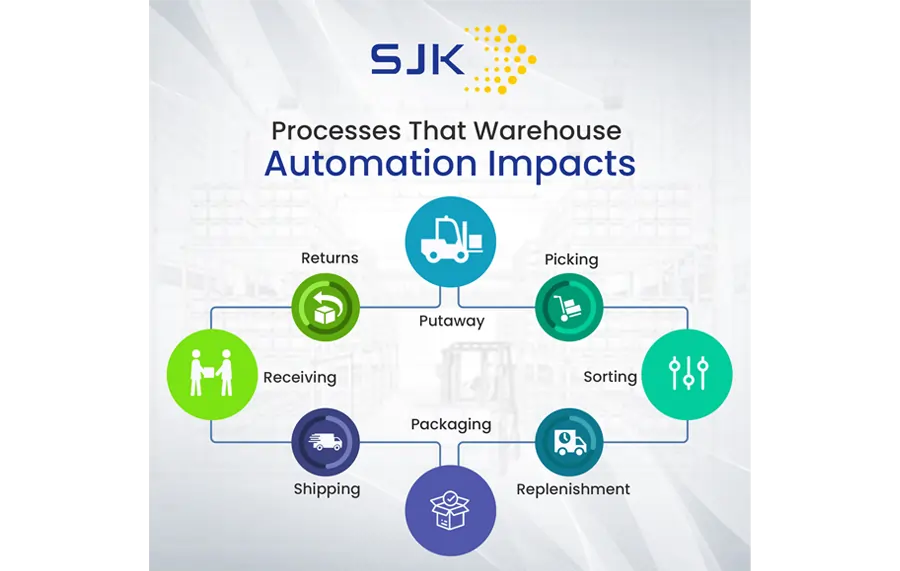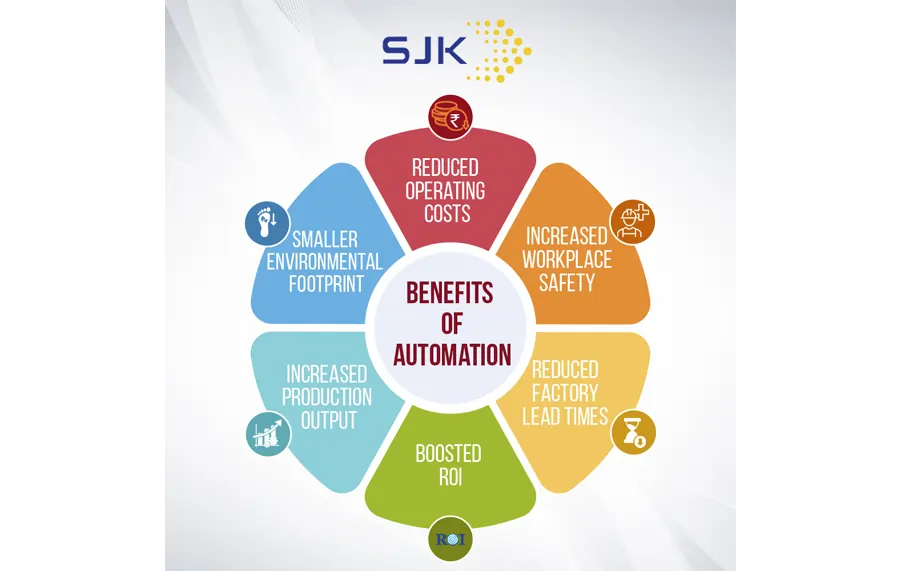The Rise of Automation on the Warehouse Floor
Overview:
There is a lot of buzz about warehouse automation these days. Obviously, the advantages are multifold and businesses can't wait to take advantage of the productivity gains promised by the recent automated technologies.
But is automation all about productivity? Will automation replace humans in work? Are robots taking over humans? When did this process begin? What will be its future?
Well, there are many questions automation brings along with it!
In this blog, we are going to discuss how automation was slowly introduced into warehouses and how it has developed over the years.
Let’s jump into the topic!
What is Automation in a Warehouse
Warehouse automation comprises all hardware, and software processes essential to automate the varied tasks to improve production, efficiency, and accuracy. This can be anything from picking inventory items and generating reports to capturing high-end data.
Why Do We Need Automation in the Warehouse
Almost all the tasks involved in the warehouse are repetitive, require a great deal of time, and are subject to human error. Say, for example, a company may hire people to pick items off a shelf and then record the information. Everyone knows that this process is repetitive, slow, time-consuming, and error-prone. It also involves the danger of the item falling upon the employee.
Today, warehouse automation and robotics can easily automate this picking process without exposing the workers to hazards.
The Processes that Benefit from Automation

When did Warehouse Automation Begin
A quick peek into Warehouse automation, will make it crystal clear that it is not a new concept. From steel conveyor belts that were introduced in 1901 to the intelligent humanoid robots that were built in 1972 warehouse operations are on a constant quest to make the process more efficient.
The first Automated Storage and Retrieval System (ASRS) was invented in the 1950s and commercial warehouses began using it in the 1960s. The ASRS equipment offered more efficient and automated operations in tasks that involved placing and retrieving items and moving the items up and down the storage racking.
Warehouses began to adopt AI and IoT solutions in the 1980s, and from then, software-controlled technologies became an integral part of warehouse management. The new technology offered high precision and mass production.
In the 2000s robotics were introduced to manage warehouse operations and though the Automated Guided Vehicle (AGV) and the Autonomous Mobile Robot (AMR) and the Automated Guided Vehicle (AGV) require some manual operations they proved to increase the efficiency of operations.
Global Warehouse Automation Market
The growth of the warehouse automation market is steered by the increasing adoption of IoT and robotics in warehouse management systems.
As there is a continuous rise of e-commerce, there is a huge demand for warehouses globally and the operators are looking to automation technologies to maximise their productivity and minimise the time to handle to stay on top of the competition. And there are a plethora of benefits that include improved transparency, low maintenance, real-time product tracking, increased last-mile delivery, and boosted productivity.
Types of Warehouse Automation
There are many types of warehouse automation to choose from depending on the needs of the specific warehouse. To name a few, there are:
● Automatic Guided Vehicles (AGVs)
● Autonomous Mobile Robots (AMRs)
● Automated Storage and Retrieval Systems (AS/RS)
● Automated Sortation Systems
The automated solutions mentioned above can work together with humans and aid in reducing operational costs, human errors, processing time, and safety risks. The automated systems make the process faster, easier, and more accurate, thereby increasing warehouse efficiency and productivity.
Benefits of Automation

Reduced Operating Costs
Robots streamline processes, increase energy savings, and improve accuracy which reduces material waste.
Increased Workplace Safety
Automation can save your employees from performing hazardous tasks.
Reduced factory lead times
Robots streamline processes, increase energy savings, and improve accuracy which reduces material waste and lead times.
Boosted ROI
Automation solutions can be customised to suit your unique goals and business requirements to increase efficiency, output, and more.
More Opportunities to be Competitive
Automated solutions offer you the opportunity to decrease cycle times and cost-per-piece while improving quality. This in turn allows you to better compete in the global marketplace.
Escalated Production Output
Robots have the capacity to work at a constant speed all day and night without supervision. You can introduce new products easily into the production process and the programming can be done without disturbing the existing process.
Smaller Footprint
By reducing the usage of space, streamlining the processes and equipment automation can aid in reducing footprint and help you to save money.
The Future of Warehouse Automation
Will the warehouse be fully automated is a million-dollar question that everyone tries to find an answer to. One fact is clear: there is no going back. Future warehouses will definitely be more efficient and advanced. Technological advancements will keep transforming warehouses to improve further and further.
Winding Up
Warehouse automation definitely improves an organisation's reliability and production while ensuring safety and accuracy. Automated solutions offer complete control over the stock and the operations.
Interested in setting up a fully automated warehouse?
We are just a click away!
Visit us @
